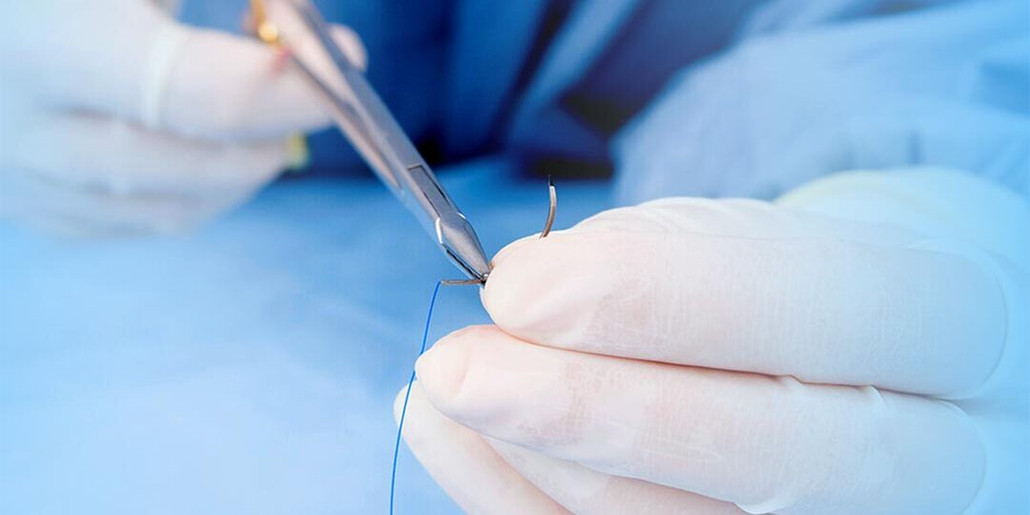
Surgical Instruments, Suture Materials, and Closure Choices
Posted on 6th Jun 2022
SURGICAL INSTRUMENTS, SUTURE MATERIALS, AND CLOSURE CHOICES
For emergency wound care, a great number of instruments and suture materials are not required. Three or four well-chosen devices and a few wound closure materials can be used to treat wounds and lacerations.
Lacerations and wounds can be treated with a few carefully selected tools:
- Needle holders
- Tissue forceps
- Surgical scissors
Despite the fact that the types of instruments used are usually consistent, the wound closure materials required for each wound are unique. Sutures, both absorbable and nonabsorbable, as well as a range of wound tapes, staples, and tissue adhesives, can be chosen based on the patient’s individual situation. The selection of suture materials, as well as the selection and proper handling of equipment, are outlined below.
BASIC SURGICAL INSTRUMENTS AND HANDLING
The following instruments can be used to treat most wounds:
- Needle holders
- Tissue forceps
- Suture scissors
- Iris (tissue) scissors
- Hemostats
- A knife handle
- And appropriate knife blades may be required for more complex wounds that require revision or débridement.
The major surgical instrument suppliers currently offer a bewildering array of instruments, but only the types and configurations of instruments required to manage wounds and lacerations are discussed here. A variety of disposable instrument sets are also available to meet the needs of many emergency wound care problems.
NEEDLE HOLDERS
A needle holder is another instrument used in surgical procedures. Its primary function is to secure the needle used to suture the wound. The shape of the needle holder is similar to that of the forceps, but the front jaws of the two tools are different. In most cases, the needle holder is made of corrosion-resistant, high-strength, high-quality stainless steel. Surgeons use needle holders to keep surgical needles in place while sewing the patient’s tissue. Because surgical needles come in a variety of shapes and sizes, doctors employ a variety of needle holders. Surgical experts will select a needle holder with a small jaw when using a small surgical needle, they will also use a needle holder with a relatively large diameter when using a thicker surgical needle.
TISSUE FORCEPS
Tissue forceps are designed to secure the tissue while causing as little trauma as possible. STILLE tissue forceps have a soft and precise feel that ensures precise handling.
Tissue forceps are available in a wide range of models and sizes. The teeth at the tip of the jaws are present in all models.
SUTURE SCISSORS
The blades of the Scissors have been specially designed to cut sutures, withstand slippage, and remain sharp during extended suture cutting without becoming dull. These scissors are made of surgical-grade stainless steel, with tungsten carbide inserts in some of them. Tungsten carbide inserts improve the cutting-edge blade’s sharpness and durability. Thumb rings on these scissors provide a firm hand grip and allow for the smooth removal of sutures and tissue cutting.
HEMOSTATIC FORCEPS
In emergency wound care, hemostats serve three purposes. Hemostats were originally intended to clamp small blood vessels in order to control hemorrhage. Another application is for grasping and securing superficial fascia while undermining and debriding wounds. Finally, this instrument is ideal for exposing, exploring, and visualizing deeper areas of a wound. In wound care, two types of hemostats are commonly used. The standard hemostat is recommended for general use. The 5-inch curved mosquito hemostat with finely serrated jaws is often the best choice for finer work in small wounds.
KNIFE / SCALPEL HANDLES
Scalpels or Scalpel Handles are designed to be used with surgical blades for tissue separation and other procedures that necessitate puncturing or cutting with a sharp surgical blade. The scalpel handle is a small and extremely sharp instrument used for surgery and anatomical dissection. Scalpels can be single-use (disposable) or reusable.
TIMING OF CLOSURE
The time of injury is critical for wound healing. The likelihood of developing a wound infection increases with each hour that passes since the injury. It has long been believed that there is a “golden period” during which a wound or laceration can be safely closed (primary intention). The precise duration of that period is determined by factors such as the mechanism of injury, anatomic location, and level of contamination. As a rough guideline, 6 to 8 hours from the time of injury has been considered a safe time frame for repairing the average uncomplicated laceration.
Surgipro is providing German Stainless Steel Surgical Instruments and has top professionals from the surgical instruments field who started this business over 30 years ago. We only supply the highest quality German stainless steel instruments that have been expertly crafted. This means we can stand by our word when we say our surgical tools come with a lifetime warranty and offer free shipping on purchases over $100.
